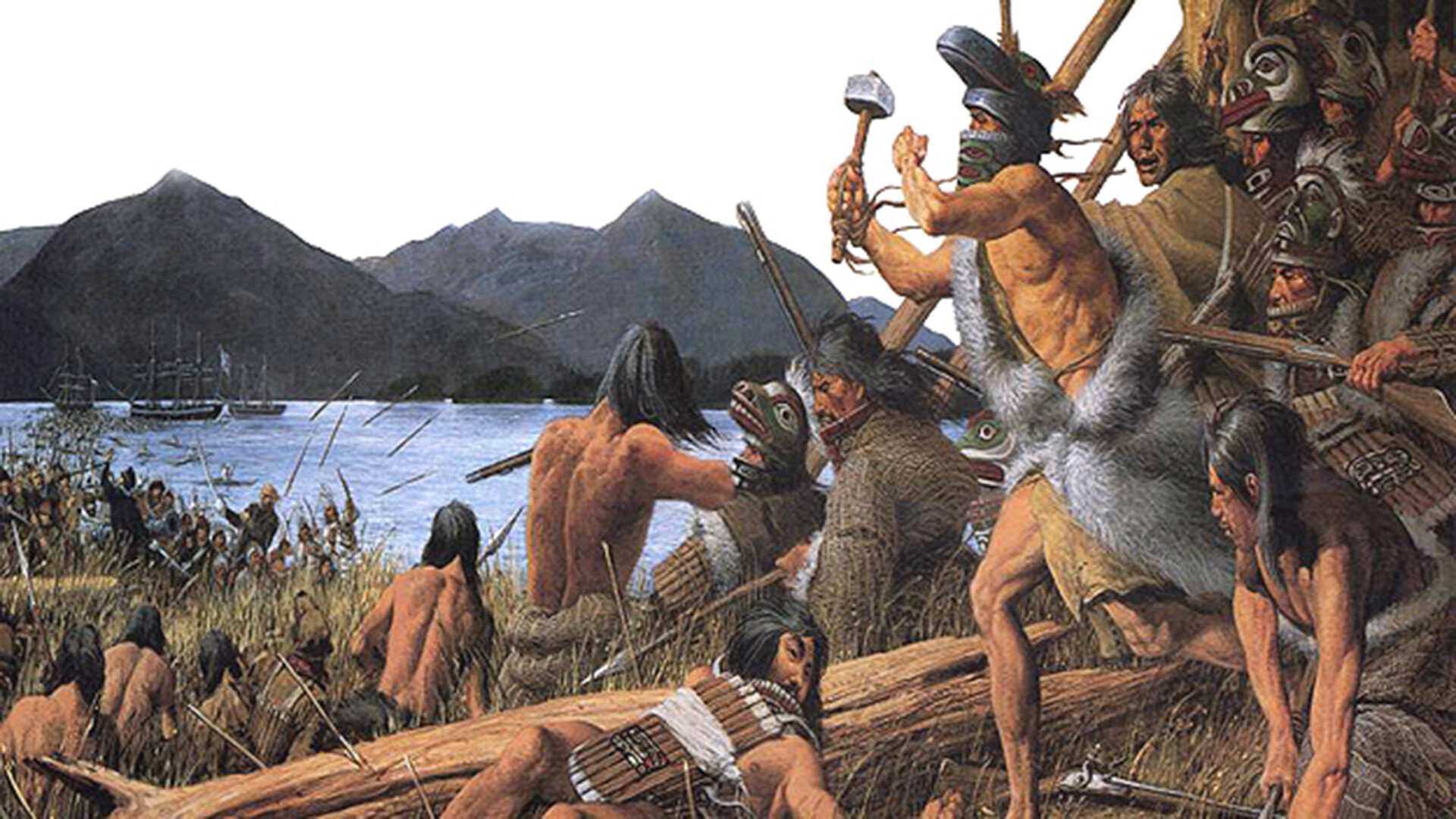
Battle of Sitka between Russians and Alaska Natives, 1804.
Louis S Glanzman/Public DomainThe northwestern part of North America remained a blank spot on the world map until the first half of the 18th century, when it was discovered and explored by the Russians. It was they who began to develop this harsh and inhospitable land.
First of all, Alaska and the Aleutian Islands attracted Europeans, due to their rich source of fur - valuable skins of fur-bearing animals - the “soft gold” of that era.

Sea otter.
Public DomainThe region abounded in a variety of wildlife, but the real treasure for Russian fishermen were sea otters, which were called ‘sea beavers’ back then. These animals were famous for the exceptional density of their fur.
Initially, the Russians did not establish permanent bases on the Aleutian Islands or the Alaskan coast. They either built temporary dwellings or settled with the natives - the Aleuts and Kodiak Eskimos, who, as excellent sea otter hunters, they attracted to hunting.
Good, trusting relationships did not always form between the fishermen and the local population. In 1763, an uprising broke out on the Fox Ridge of the Aleutian Archipelago, caused by cruelty on the part of the colonists.
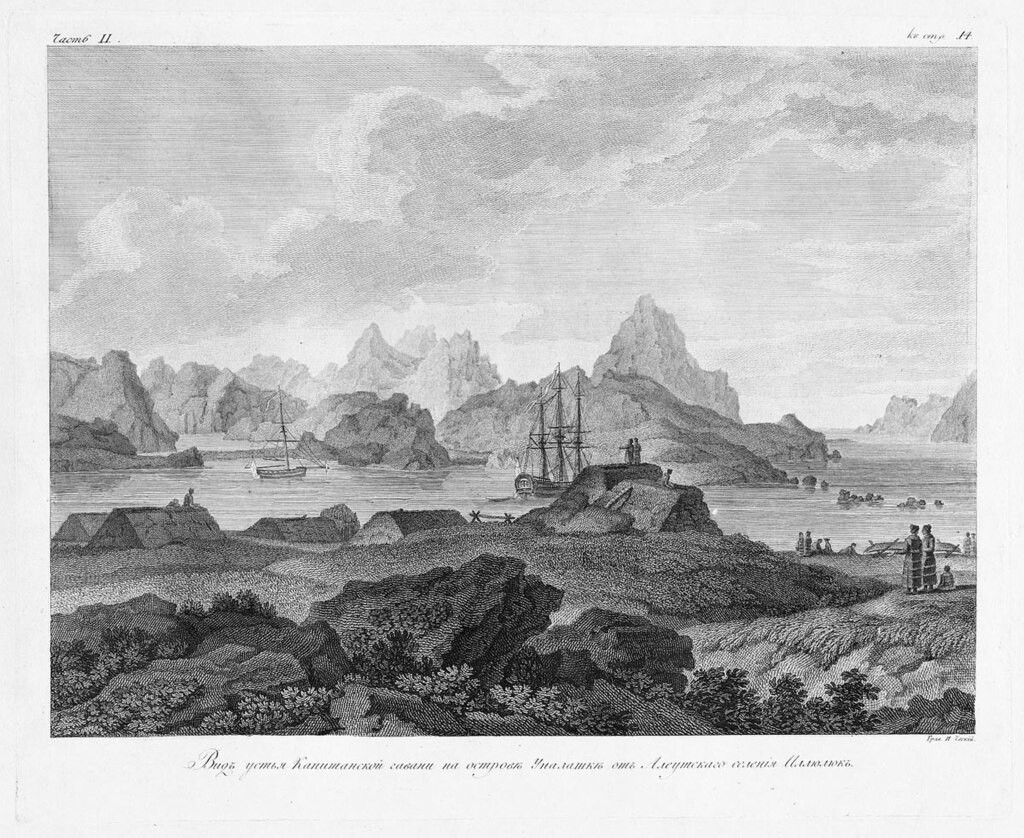
Captains Bay, Unalaska Island.
Public DomainDuring the fighting that lasted several years, the Russians lost four ships and more than a hundred men. The losses of the Aleuts numbered several thousand.
The first permanent Russian trading settlement in the future Russian America appeared on the island of Unalaska in 1772 and, from that moment on, the number of such settlements began to pop up like mushrooms. The region itself turned into an arena of struggle and rivalry between dozens of private trading companies engaged in the fur trade.
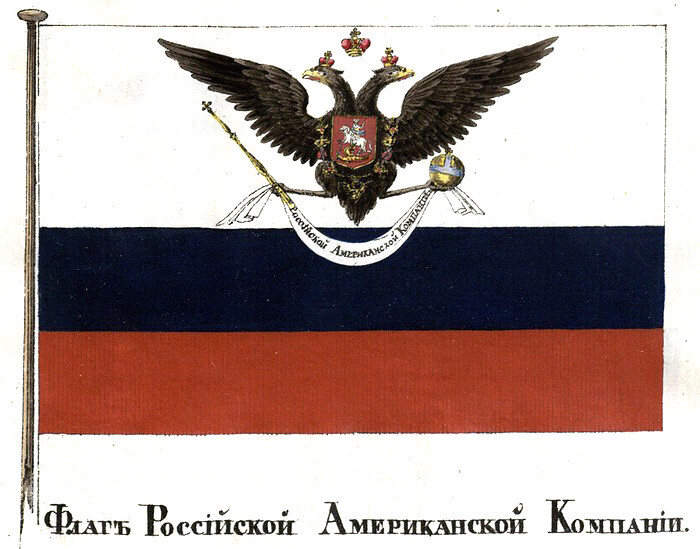
Flag of the Russian-American Company.
Public DomainThe Russian state did not interfere in the affairs of the private traders for a long time, but the appearance of British ships of Captain James Cook near the Aleutian Islands in 1778 forced the authorities to take a closer look at the situation in the region.
At the end of the 18th century, St. Petersburg decided to put an end to trade wars in Alaska. In 1797, the Commercial Collegium (a state institution dealing with the affairs of trade) presented Paul I a report titled: ‘On the harmfulness of many companies in America’.
Two years later, the Russian-American Company was established by the emperor's decree, which monopolized the entire fur extraction and trade in northwestern America. And, despite the name, there were no U.S. citizens in it.

Alexander Baranov.
Public DomainThe company became the state’s main instrument for colonization of Alaska and adjacent islands. Thus, its first head, Alexander Baranov, was simultaneously the Chief Ruler (governor) of Russian America.
Russia steadily expanded its presence in northwestern America, which sometimes caused resistance from the local inhabitants. The first half of the 19th century was marked by a number of armed conflicts between the colonists and the Tlingit Indians.
Nevertheless, expansion continued. In 1812, Fort Ross was founded on the Californian coast, 80 kilometers from San Francisco. The Spaniards laid claim to these lands, but it never came to an open conflict between the states.
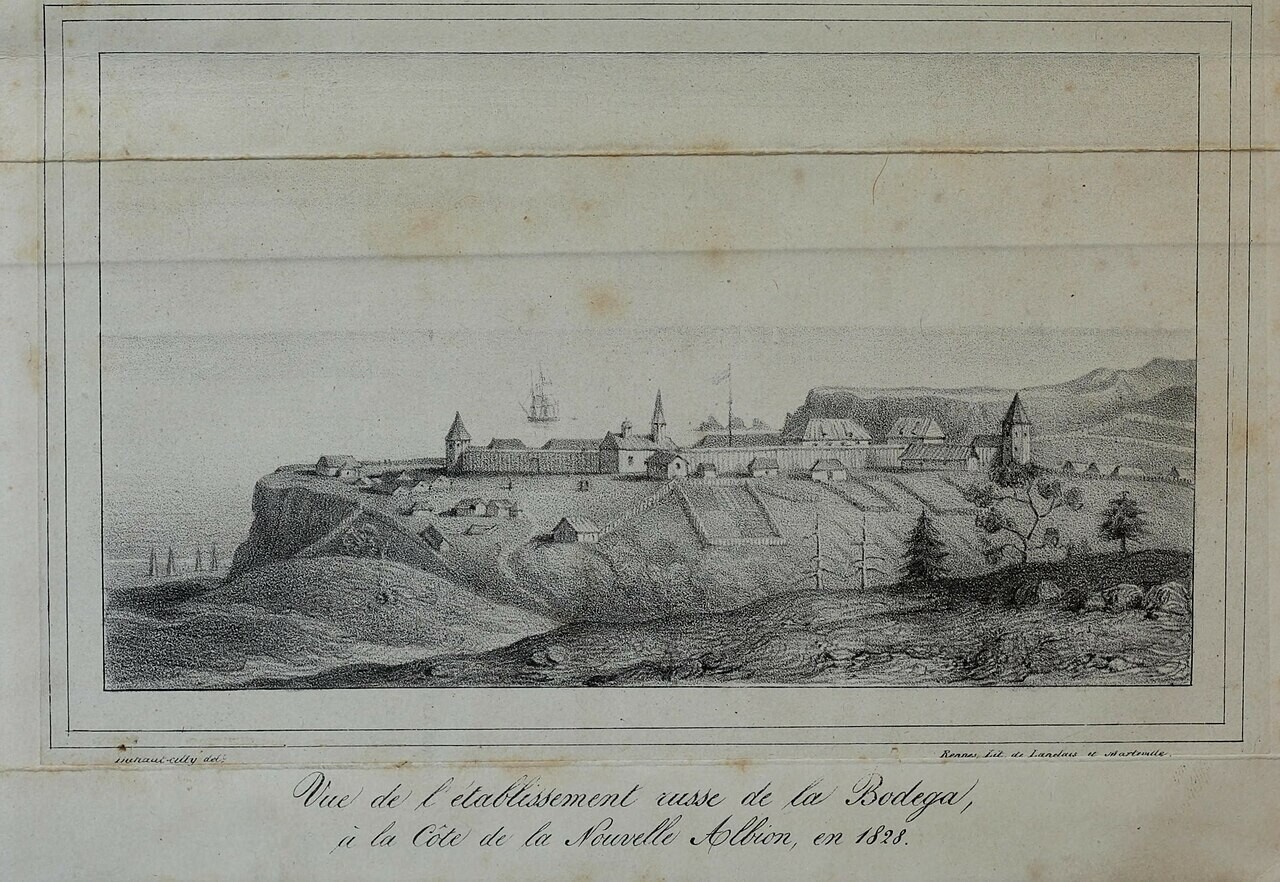
Fort Ross.
Public DomainMeanwhile, the costs of maintaining the fort were many times greater than the income from it. “The south is not so favorable,” wrote Leontius Hagemeister, the new chief governor of Russian America, in 1818. “There are no beavers in Ross and there are only small quantities of any fishery...”
Since the 1820s, Russian presence in America began to experience constant pressure from other powers: from the south - the United States, from the northeast - Great Britain. There was no longer talk of continuing southern expansion, but the development of Alaska itself was becoming extremely difficult.
First of all, there was a catastrophic lack of settlers from the metropolis. “Our settlements do not contain more than 2 thousand inhabitants, including up to 500 Russians, scattered over the space of several thousand miles,” the main board of the Russian-American Company reported to Minister of Finance Yegor Kankrin in 1824.
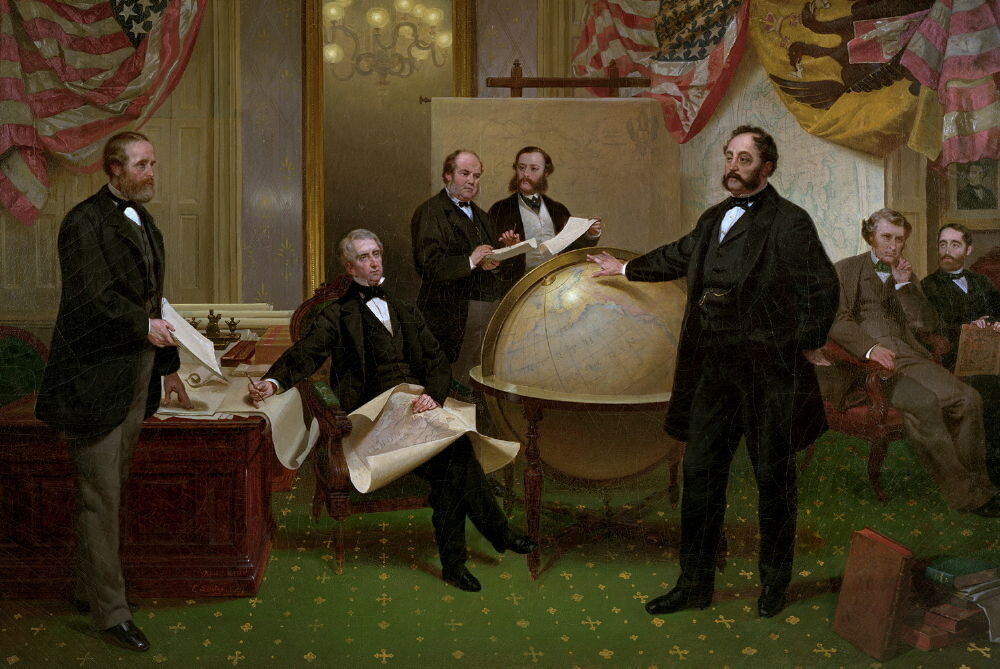
William H. Seward and Eduard de Stoeckl Negotiating the Alaska Purchase.
Emanuel LeutzeIn 1839, the Russian-American Company petitioned the Ministry of Finance for permission to abolish the California colony, which had become a burden. Two years later, it was acquired by American landowner John Sutter.
In 1867, it was the turn of all Russian property in North America, including Alaska and the Aleutian Islands. Among the reasons for their sale to the U.S. were low revenues at high costs, the inability to defend the region in the event of a major war with any of the great powers, the failure of the “firm establishment of the Russian element” and the treasury's need for finances.
If using any of Russia Beyond's content, partly or in full, always provide an active hyperlink to the original material.
Subscribe
to our newsletter!
Get the week's best stories straight to your inbox